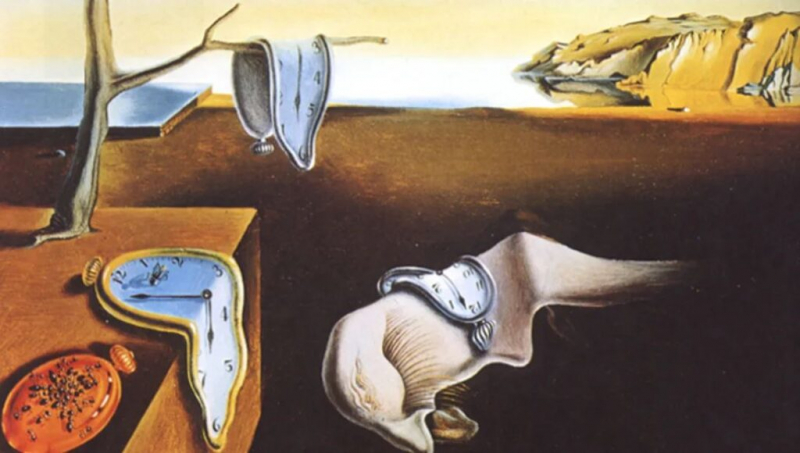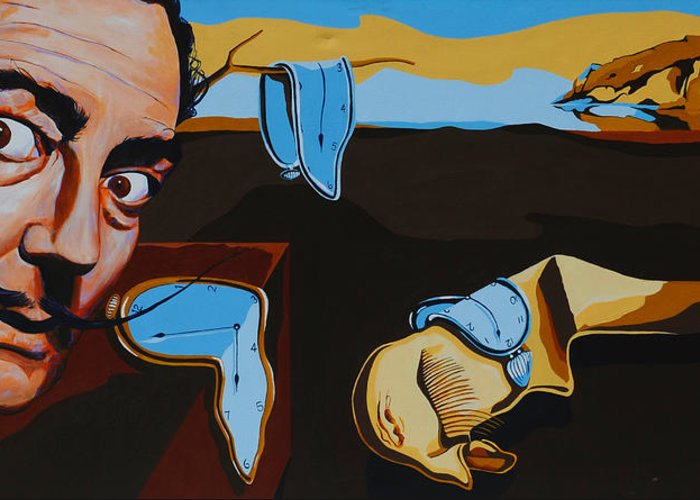The Persistence of Memory
Salvador Dal (1904-1989), a Spanish artist and one of the key figures of the Surrealism art movement, created The Persistence of Memory. The Persistence of Memory is unquestionably the most famous surrealist painting ever created, with millions of reproductions, posters, and t-shirts bearing its image. It was anonymously gifted to the Museum of Modern Art in New York in 1931 by one of the most controversial surrealist artists of all time, Salvador Dali, and has stayed in their collection ever since. It is also known as "The Melting Clocks" or "The Melting Watches."
The middle "figure" has no specific form or composition, although it appears to be a face, possibly a hazy profile of Dali's own face draped in a melting watch.
Although composed of hard metal, the timepieces are presented in a soft pliable form that exemplified Dal's philosophy of "softness" and "hardness" and were believed to symbolize the surrealist perception of a "Camembert melting in the light."
An orange pocket watch covered with ants may be found in the painting's lower-left corner. In his paintings, Dali frequently used ants to represent decay.
It was created during a period when Dali was intensively experimenting with self-induced hallucinations as a means of exploring subconscious art,' or as the artist called it, his 'paranoiac-critical approach.'
The general public, as well as Dali himself, has frequently battled with the image's significance.
Date created: 1931
Dimensions: 24 × 33 centimeters (9.5 × 13 inches)
Location: MoMA, New York City, United States












